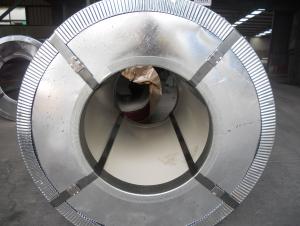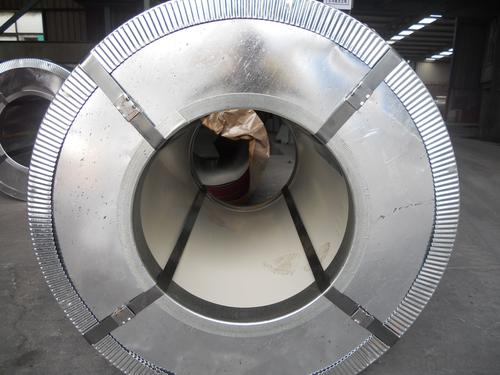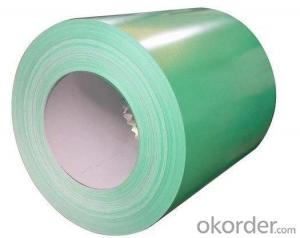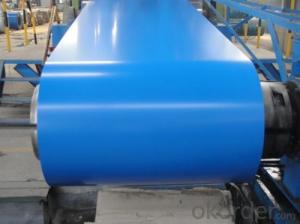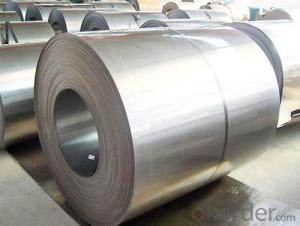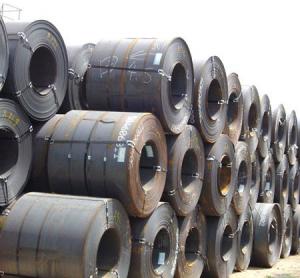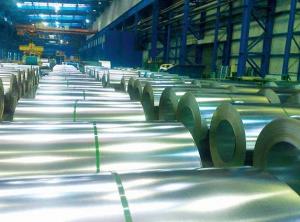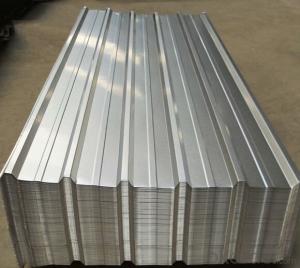HOT DIP GALVANIZED STEEL COIL
- Loading Port:
- China Main Port
- Payment Terms:
- TT OR LC
- Min Order Qty:
- -
- Supply Capability:
- -
OKorder Service Pledge
OKorder Financial Service
You Might Also Like
HOT DIP GALVANIZED STEEL COIL
STEEL GRADE & STANDARD:JIS G3302 SGCC
ZINC COATING MASS:Z40
SPANGLE:REGULAR SPANGLE
SURFACE TREATMENT:CHROMATED,UNOILED,NONSKINPASSED
SIZE:0.4*1200MMM*C
Application
1. Architecture Roofs and outside walls of civilian and industrial buildings, garage doors, fencings and window blinds
2. Appliances Industry Outer clad sheets for washing machine, refrigerator, television, air conditioner and ventilation system, explosion-proof strip, solar water heater and appliance parts
3. Auto Industry Muffler, heat shields of exhaust pipe and catalytic converter, auto parts & accessories under the frame, signboard in highway
4. Industrial Instruments Electric control cabinet, industrial refrigeration equipment, automatic vending machine
Superiority
1. Good Resistance to Corrosion
2. Qualified Processing Machinability
3. High Thermal Resistance
4. Excellent Reflectivity
5. Inexpensive and effective enough
6. Can be recycled and reused multiple times
- Q: Is steel harder than iron or is iron harder than steel?Please explain... and help!Thanks
- steel is harder than iron Iron is a chemical element. It is a strong, hard, heavy gray metal. It is found in meteorites. Iron is also found combined in many mineral compounds in the earth's crust. Iron rusts easily and can be magnetized and is strongly attracted to magnets. It is used to make many things such as gates and railings. Iron is also used to make steel, an even harder and tougher metal compound. Steel is formed by treating molten (melted) iron with intense heat and mixing it (alloying) with carbon. Steel is used to make machines, cars, tools, knives, and many other things.
- Q: What are the different methods of coil rewinding for steel coils?
- There are several different methods of coil rewinding for steel coils, including manual rewinding, semi-automatic rewinding, and fully automatic rewinding. In manual rewinding, the coils are rewound by hand using a winding machine or tool. Semi-automatic rewinding involves the use of a machine that assists with the rewinding process, but still requires some manual intervention. Fully automatic rewinding, on the other hand, involves the use of advanced machinery that can automatically rewind the steel coils without any manual intervention. These different methods offer varying levels of efficiency, speed, and precision in the coil rewinding process.
- Q: What are the different types of steel alloys used in coil manufacturing?
- There are several different types of steel alloys used in coil manufacturing, including carbon steel, stainless steel, and high-strength low-alloy (HSLA) steel. Carbon steel is the most commonly used alloy, known for its high strength and durability. Stainless steel is used for its corrosion resistance and aesthetic appeal. HSLA steel offers a combination of strength, formability, and weldability, making it suitable for various applications in coil manufacturing.
- Q: How are steel coils handled during transportation to prevent damage?
- Steel coils are typically handled during transportation by using specialized equipment such as cranes or forklifts with padded forks. They are secured with steel bands or other restraints to prevent movement and damage. Additionally, they are usually loaded onto flatbed trucks or shipping containers with proper cushioning and support to minimize the risk of impact or deformation during transit.
- Q: How are steel coils used in the production of electrical transmission poles?
- Steel coils are used in the production of electrical transmission poles as the primary material for constructing the pole itself. The steel coils are typically cut and shaped into the desired dimensions, then welded together to form the pole structure. This provides strength, durability, and stability to withstand the load and environmental conditions associated with electrical transmission lines.
- Q: I'm kind of confused as to how the difference between a stainless steel and blued steel firearm is sometimes only $20 or so. Isn't stainless steel fairly more expensive to manufacture than plain carbon steel? Are some stainless steel firearms simply stainless steel finished with carbon steel underneath?
- Stainless guns are made out of stainless steel. Now there are also guns that are coated in nickel. Those are made of the usual gun steel. Stainless steel isn't really that much more expensive than normal steel when bought in large quanities.
- Q: How are steel coils used in the production of metal ductwork?
- Steel coils are used in the production of metal ductwork as they provide a continuous and flexible supply of raw material. These coils are unrolled, cut, and shaped into specific dimensions to create the ductwork components. The steel's strength and durability make it suitable for handling high air flows and maintaining structural integrity, ensuring efficient airflow in heating, ventilation, and air conditioning (HVAC) systems.
- Q: I am searching for an online article which discusses any aspect of the use of austenitic stainless steels. I was just wondering if anyone could help me find one. No sales articles. Thank you!
- *Austenitic, okorder
- Q: What is the shelf life of steel coils?
- The shelf life of steel coils is indefinite if they are stored properly. Steel coils are known for their durability and long-lasting nature, making them suitable for extended storage periods without any degradation in quality. However, it is important to store them in a dry and well-ventilated area, away from moisture and corrosive substances to prevent any potential damage.
- Q: What are the different types of steel coil edge treatments?
- There are several different types of steel coil edge treatments used in the manufacturing and processing of steel coils. These treatments are done to enhance the edge quality, protect against damage, and facilitate handling and processing of the coils. Some of the common types of steel coil edge treatments include: 1. Mill Edge: This is the standard edge treatment provided by the steel mill. It is the raw edge of the steel coil that has been produced during the hot rolling process. Mill edge is typically sharp and may have some irregularities. 2. Slit Edge: Slit edge is a type of edge treatment where the coil is slit to the desired width, and the edges are then processed to remove any burrs or unevenness. Slit edge coils have smoother edges compared to mill edge coils. 3. Deburred Edge: Deburring is a process that removes any sharp or rough edges from the coil. It is done using specialized equipment or techniques to create a smoother and safer edge. Deburred edges are commonly used in applications where safety and handling are critical. 4. Rounded Edge: Rounded edge treatment involves rounding the edges of the coil to reduce the risk of damage during handling and processing. This treatment is often used in applications where the coil needs to be uncoiled or fed into machinery without causing any damage. 5. Beveled Edge: Beveling is a process where the edges of the coil are chamfered or cut at an angle. Beveled edges are used in applications where easy insertion, joining, or welding of the coil is required. The beveling process also helps to improve the strength and durability of the edge. 6. Sheared Edge: Shearing is a cutting process where the coil is cut to the desired width using high-pressure blades or scissors. Sheared edge treatment provides a clean and straight edge, free from burrs or irregularities. It is commonly used in applications where precise dimensions and a smooth edge are required. These are just a few of the different types of steel coil edge treatments commonly used in the industry. The choice of edge treatment depends on the specific requirements of the application, such as handling, processing, safety, and aesthetics.
Send your message to us
HOT DIP GALVANIZED STEEL COIL
- Loading Port:
- China Main Port
- Payment Terms:
- TT OR LC
- Min Order Qty:
- -
- Supply Capability:
- -
OKorder Service Pledge
OKorder Financial Service
Similar products
Hot products
Hot Searches
Related keywords
